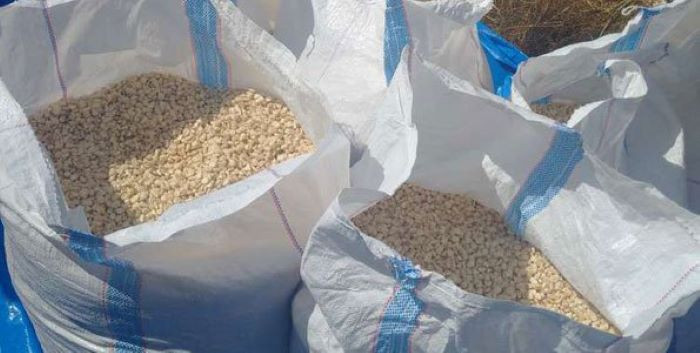
ALREADY, the chickens from the Command Agriculture experiment are being counted before the eggs are hatched.
guest column: Tapiwa Nyandoro
Championed as the best thing since sliced bread, the land reform programme, a covert version of “command agriculture”, may have met its Waterloo in the in the overt form.
The absence of market forces and natural selection as regards the aptitude and quality for commercial agriculture among the programme’s beneficiaries has taken its toll. Not every (self-proclaimed) farmer is one.
Viable modern commercial farming requires application of contemporary enterprise management know-how and relevant agro-scientific knowledge, skills, experience and continuous innovation to increase productivity, and thus the competitive edge, as indeed is the case in most industries.
Some beneficiaries in the A2 commercial farming category are in the programme to kill time and for the free inputs, diesel included and free farm machinery, which they resell for a handsome profit, no questions asked. Some rent out the “free land”. These anomalies and perverse incentives must be weeded out.
Apply the Pareto principle to the programme, as much as 80% of the new commercial farmers may be square pegs in round holes; in it for the freebies.
This may explain the significantly reduced efficiency and production from the agriculture sector. Will traction be found from the Command Agriculture initiative going forward?
- Chamisa under fire over US$120K donation
- Mavhunga puts DeMbare into Chibuku quarterfinals
- Pension funds bet on Cabora Bassa oilfields
- Councils defy govt fire tender directive
Keep Reading
Or will resources thrown at the embarrassing problem of food insecurity with what appears to be reckless abandon, prove to be the last stroke that broke the camel’s back?
Reports that only 38% of the targeted hectarage had been planted by early February 2017 suggest 60% of the resources may have been wasted.
Driven by emotion, and executed in a hurry, the output from the Command Agriculture initiative’s first season may not justify the investment.
The shrill voices celebrating its success betray anxiety on the likely outcome. But lessons can be drawn from this school of hard knocks.
The first lesson, amongst probably many others, is the necessity of prudence. Land and financial resources must not be wasted.
The experiments or trial runs must be done on a smaller scale, in a “laboratory setting” under close observation with data recording before sanctioning full production runs.
This is done to acquire knowledge and map out risks that need mitigation.
The second, of course, is conclusions come after usually repeated and verified observations or findings.
It can be argued, however, such learning is akin to re-inventing the wheel. The difference between the programme and the long dead collective farms of the Soviet Union is minimal.
The absence of non-perverse market forces that drive innovation, competitiveness, a sense of ownership, prudence, and productivity is apparent.
Instead, wicked thoughts of how to cheat the unnatural programme proliferate, making comprehensive and expensive post-harvest financial and forensic audits essential.
The cotton industry’s contract farming industry had succumbed to these vices and more. Without support from the banks to give leverage to the farmer, it became an input suppliers and buyers’ market.
A refusal by government to allow GMO seeds, another act of autocracy, meant yields per hectare, in product and cash, fell below international break-even points, as did inadequate, but over priced inputs.
Inadequate application of agro-sciences and erratic rainfall added to the industry’s woes.
Then, of course, the effects of diseconomies of scale retard mechanisation or reduce its advantages.
The broken value chain completed the rout. The same weaknesses still obtain in both the cotton and the maize value chains.
Government stepping in as the supplier of inputs helps to increase access to the commodities, but the above-mentioned weaknesses, may, instead, deliver a blow to total factor productivity, and as a result hamper the national economy going forward.
The maize price per tonne of $390 the Grain Marketing Board (GMB) is “commanded” to pay for deliveries from self-funded farmers by government is too high.
Given an international price of around $200, it will add salt to injury, and encourage side-marketing of produce, by Command Agriculture input beneficiaries, through that route.
Worse, it will then inhibit the sales of maize from the GMB as shrewd buyers will bypass the GMB smuggling in the product or dangling spot payments the GMB is unlikely to match.
Exports markets too will dry up unless government steps in with a subsidy to foreign markets equal to the price of the commodity on the international markets.
Additionally, the high maize price will cripple the pork and chicken industries, killing off any prospects of exporting the two value-added products. The potential for horrendous losses due to wastage and storage costs is thus staggering.
On the ethical side, the command agriculture programme fails a basic test.
The authorities in the chain of command of the programme stand to benefit materially from the programme — sometimes irrationally so, as the unreasonably high price of maize suggests and as does the access to unjustified quantities of free inputs by the country’s upper class.
It begs the question whether self-interest, rather than national interest, was the reason behind the costly venture.
The rich, contrary to the values of the liberation struggle, are benefiting from national coffers even more than the landed gentry did under the colonial regime.
Zanu PF youth leader Kudzanai Chipanga said as much at President Robert Mugabe’s birthday celebrations.
He was mildly rebuked by the birthday boy, who is aware of yet another problem: diminishing production from the communal areas due partly to a rural exodus.
This is yet another inadvertent (on the bright side) creation of the government’s party first, nation second, policies.
The sad sum total of it all, is, as currently structured: Government’s desperate efforts to turn around the fortunes of the land reform programme may come to naught as will be shown by the red ink in the programme’s audited books of accounts, sowing the seeds of its unravelling and retrogressive balkanisation of more commercial farm land. And yet we all know how the state of disaster could be avoided.
Tapiwa Nyandoro can be contacted on [email protected] or [email protected]











